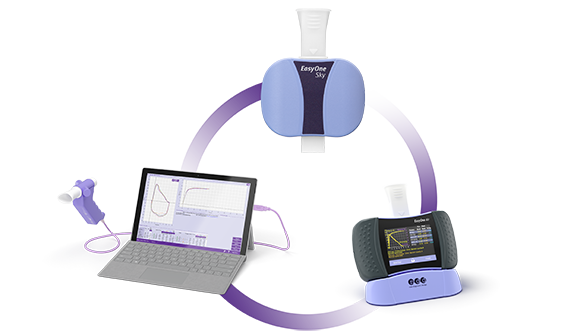Tips for making sure asthma is well-controlled before the kids return to school

Asthma is one of the leading causes of missed school days, leading to more than ten million missed school days every year.1 In fact, more than half of children with asthma
experience school absenteeism.1 As children head back to school, it’s critical to understand how best to manage asthma in school-aged children and the steps to take for monitoring and preventing asthma flare-ups.
The impact of asthma #
Asthma flare-ups, clinically known as “exacerbations”, in children often occur when a child faces exposure to certain triggers. Triggers vary between children but include viral infections, stress, exercise, mold, smoke, dust, and other particles in the air. With exposure to the trigger, the body reacts with swelling and muscle tightening around the airways and increasing mucus production. As the airways narrow, wheezing occurs (which sounds like a high-pitched whistle) and breathing becomes difficult. Uncontrolled asthma is when an individual either has poor control of their symptoms and/or more frequent flare-ups.2
- Among children with current asthma, 44% have uncontrolled asthma.
- Asthma is the top chronic disease among children,3 affecting almost seven percent of all children, or about 4.7 million of American children.
- In 2021, 1.8 million children experienced asthma attacks.
- Asthma is the third-most-common cause of hospitalizations in children under 15.4
Uncontrolled asthma with frequent severe asthma attacks comes with a high cost to families because of increased risks of emergency department visits, hospitalizations, and missed work and school days. A study published in Annals of the American Thoracic Society found that the estimated annual cost to be approximately $82 billion, including healthcare utilization, lost productivity, and medications.5 A study published in American Journal of Respiratory and Critical Care Medicine in 2019 found the estimated cost burden of uncontrolled asthma to be nearly $1 trillion over the next 20 years.6 However, controlled asthma has virtually no impact on everyday life.
How does asthma affect school-aged children? #
As kids finish up their summer playing outside in the heat and humidity and gear up to return to school in the fall, it’s crucial to understand how they’re affected by asthma.
Children with uncontrolled asthma, especially those who must be hospitalized for their asthma complications, are less likely to do well in school.1 7One study, published in the journal Clinical & Experimental Allergy in 2021, found that children in Australia with asthma who were hospitalized performed worse academically and even had a substantial risk of not completing some years of high school.7
Fortunately, early clinical intervention, educational programs on the impact of asthma, and plans for managing asthma symptoms can improve educational performance and quality of life in children with asthma.8
What can be done? #
The National Asthma Education and Prevention Program (NAEPP) offers guidelines to diagnose and manage asthma and prevent asthma attacks. 910
- Early diagnosis is vital.
An earlier diagnosis means early management and fewer asthma exacerbations. After a medical history and examination showing periods of respiratory symptoms, children ages five and older should get a spirometry test. Spirometry in children with asthma will typically show partially reversible airflow obstruction. - Determine the severity of asthma.
Since the signs and symptoms vary in a child with asthma, initial and routine monitoring is critical. An initial peak flow test and spirometry help to determine the severity, which is defined by how difficult it is to manage symptoms.2 - Routine visits and spirometry monitor asthma severity.
As mentioned, symptoms frequently vary in a child with asthma, so routine visits with a healthcare provider are crucial. Depending on the severity level, patients should be assessed every one to six months. - Determine and control asthma triggers.
Determining the child’s asthma triggers plays a critical part in controlling asthma. The NAEPP recommends that individuals suspected of being exposed to allergens should be treated with multicomponent interventions to control the exposure.10 - Treat comorbid health conditions.
When a child’s asthma symptoms worsen and don’t respond to medication adjustments, the healthcare provider should look for other health conditions that could exacerbate asthma. Whether it’s sinusitis, reflux, or respiratory infections, treating these conditions may alleviate asthma symptoms. - Prescription medications
The medications in a child’s asthma management plan depend on the severity of asthma symptoms. Anti-inflammatory drugs like nebulized corticosteroids manage symptoms by treating the underlying inflammation. - Physicians and parents work together.
Physicians should work with parents to develop the child’s asthma control plan. Writing out the plan helps to clarify expectations, allows children and parents to remember the treatment plans, and lets parents share it with the child’s schoolteacher. The asthma control plan should be reviewed and adjusted at every follow-up visit.
EasyOne spirometry machines - tailored solutions for every practice.
Explore our spirometry machines
Keeping asthma under control as your child returns to school #
Poorly controlled asthma can cause hospitalizations and missed school days. Fortunately, children can remain healthy and avoid the hospital with the right tools, including an asthma control plan and routine spirometry.
Hsu J, Qin X, Beavers SF, Mirabelli MC. Asthma-Related School Absenteeism, Morbidity, and Modifiable Factors. Am J Prev Med. 2016;51(1):23-32. doi:10.1016/j.amepre.2015.12.01 ↩︎ ↩︎ ↩︎
Global Initiative for Asthma. Global Strategy for Asthma Management and Prevention (2024 Report). https://ginasthma.org/reports/ ↩︎ ↩︎
Wisk LE, Sharma N. Prevalence and Trends in Pediatric-Onset Chronic Conditions in the United States, 1999–2018. Acad Pediatr. 2025;25(4). doi:10.1016/j.acap.2025.102810 ↩︎
Kaiser SV, Rodean J, Coon ER, Mahant S, Gill PJ, Leyenaar JK. Common Diagnoses and Costs in Pediatric Hospitalization in the US. JAMA Pediatr. 2022;176(3):316-318. doi:10.1001/jamapediatrics.2021.5171 ↩︎
Nurmagambetov T, Kuwahara R, Garbe P. The Economic Burden of Asthma in the United States, 2008-2013. Ann Am Thorac Soc. 2018;15(3):348-356. doi:10.1513/AnnalsATS.201703-259OC ↩︎
Yaghoubi M, Adibi A, Safari A, FitzGerald JM, Sadatsafavi M. The Projected Economic and Health Burden of Uncontrolled Asthma in the United States. Am J Respir Crit Care Med. 2019;200(9):1102-1112. doi:10.1164/rccm.201901-0016OC ↩︎
Mitchell RJ, McMaugh A, Homaira N, Lystad RP, Badgery-Parker T, Cameron CM. The impact of childhood asthma on academic performance: A matched population-based cohort study. Clin Exp Allergy. 2022;52(2):286-296. doi:10.1111/cea.14022 ↩︎ ↩︎
Carvalho Coelho AC, Barretto Cardoso LS, de Souza-Machado C, Souza-Machado A. The Impacts of Educational Asthma Interventions in Schools: A Systematic Review of the Literature. Can Respir J. 2016;2016:8476206. doi:10.1155/2016/8476206 ↩︎
Ressel GW. NAEPP Updates Guidelines for the Diagnosis and Management of Asthma. Am Fam Physician. 2003;68(1):169-170. ↩︎
Cloutier MM, Baptist AP, Blake KV, et al. 2020 Focused Updates to the Asthma Management Guidelines: A Report from the National Asthma Education and Prevention Program Coordinating Committee Expert Panel Working Group. J Allergy Clin Immunol. 2020;146(6):1217-1270. doi:10.1016/j.jaci.2020.10.003 ↩︎ ↩︎










